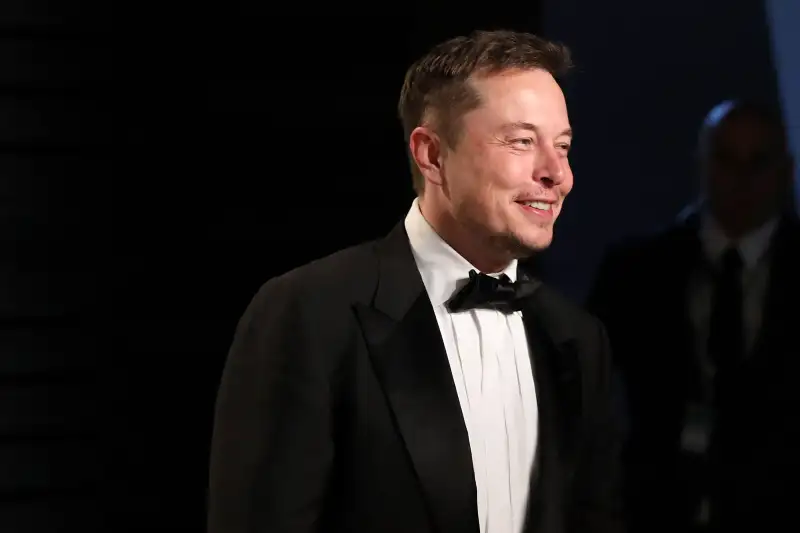8 Innovative Ways Elon Musk Made Money Before He Was a Billionaire

Elon Musk is one of Silicon Valley’s most adventurous entrepreneurs, with his two biggest companies, Tesla Motors and SpaceX, skyrocketing in value over the last several years as he aims to transform the transportation industry.
He's now worth $16.6 billion, but getting to that net worth was far from an overnight success story. Below are some of the most resourceful ways in which he made money before becoming a famous billionaire.
He created and sold his own video game at the age of 12.
It was a space-themed game called Blastar, where the objective was to destroy an alien ship filled with weapons of mass destruction. Musk had been interested in computers from an early age, and taught himself programming starting at 9-years-old. He received $500 when the source code for the BASIC-based game was published in South African magazine PC and Office Technology. It was the first product Musk ever sold; he reportedly called it a “trivial game… but better than Flappy Bird.”
He once took a job as a boiler room cleaner at a lumber mill.
After leaving South Africa in 1988, Musk spent time working a series of odd jobs around Canada. According to Ashlee Vance's biography on him, Musk first tended vegetables and shoveled out grain bins at a cousin’s farm in Waldeck, and then learned how cut logs with a chain saw in Vancouver. After a visit to the unemployment office, he inquired about the job with the best wage, which turned out to be a gig cleaning the boiler room of a lumber mill. For $18 an hour — a great wage in 1989 — the grueling work involved wearing a hazmat suit, crawling through small spaces, and shoveling residue in extremely high-temperature conditions, according to Musk.
He landed an internship with the Bank of Nova Scotia by cold calling a top executive to meet for lunch.
After reuniting with his brother Kimbal in Canada, the two determined brothers researched businesspeople that they wanted to meet and took turns making cold calls to ask if they could have lunch. One such businessman was Peter Nicholson, a top executive at the Bank of Nova Scotia, who was fascinated by the boys’ initiative. Upon meeting them, he was so impressed with Elon — the geekier of the two brothers — that he became his mentor and offered him a summer internship at the bank for $14 an hour.
To earn extra cash, Musk sold computer parts and full PCs out of his dorm room.
While at Queens University in Ontario, Musk had a profitable side hustle for a time. He sold entire computers, as well as various hardware parts, from the comfort of his dorm room. He would build whatever suited the needs of fellow students – like a tricked-out gaming computer or a simple word processor, for example. As Musk described, “if their computer didn't boot properly or had a virus, I'd fix it. I could pretty much solve any problem." Not bad for the guy who would eventually become the inspiration for Tony Stark in Iron Man.
He paid for rent in college by converting his house into a nightclub.
After transferring to the University of Pennsylvania in 1992, Musk quickly put his entrepreneurial instincts to good use. He and a friend moved into a 10-bedroom frat house off campus for relatively cheap. During the week, the two of them would study, but on weekends, they turned the place into "a full-out, unlicensed speakeasy," according to his roommate Adeo Ressi. This included covering the windows with black trash bags and the walls with bright paint. Musk, who was never big on drinking except for the occasional vodka and Diet Coke, would stay sober for these events to keep things under control. He would run the parties, and as he explained, "I was paying my own way through college and could make an entire month's rent in one night." Once, his mother Maye even worked the door at one of the big parties.
In 1995, Musk quit graduate school at Stanford University to co-found an internet startup.
Despite getting accepted to a Stanford Ph.D. program, Musk forwent the tuition costs when he decided after two days that the internet had far greater promise to change society. He immediately dropped out and teamed up with his brother Kimbal and started Zip2, a company that provided maps and directories to online newspapers. To start the venture, they used $28,000 out of their father's bank account.
He first became a millionaire four years later, when he and his brother sold Zip2.
It was bought by early PC company Compaq in 1999, who had become a leading supplier of PC systems until it was overtaken and bought out by HP in 2002. The Zip2 deal amounted to $307 million; Musk's share of the proceeds was a tidy sum of $22 million.
Musk scored a net return of over $165 million after his financial services company, X.com, merged with PayPal - which was bought by eBay.
Soon after the sale of Zip2, Musk invested $12 million of his own money into co-founding X.com, which he envisioned as the future of online banking. In early 2000, X.com merged with its rival Confinity, and the company was renamed PayPal. As the majority shareholder, Musk was ousted as CEO amid protracted boardroom squabbling. PayPal then accepted eBay's offer to buy in July 2002 - against Musk's advice. After the 1.5 billion deal finally went through, he came away with $180 million after taxes.